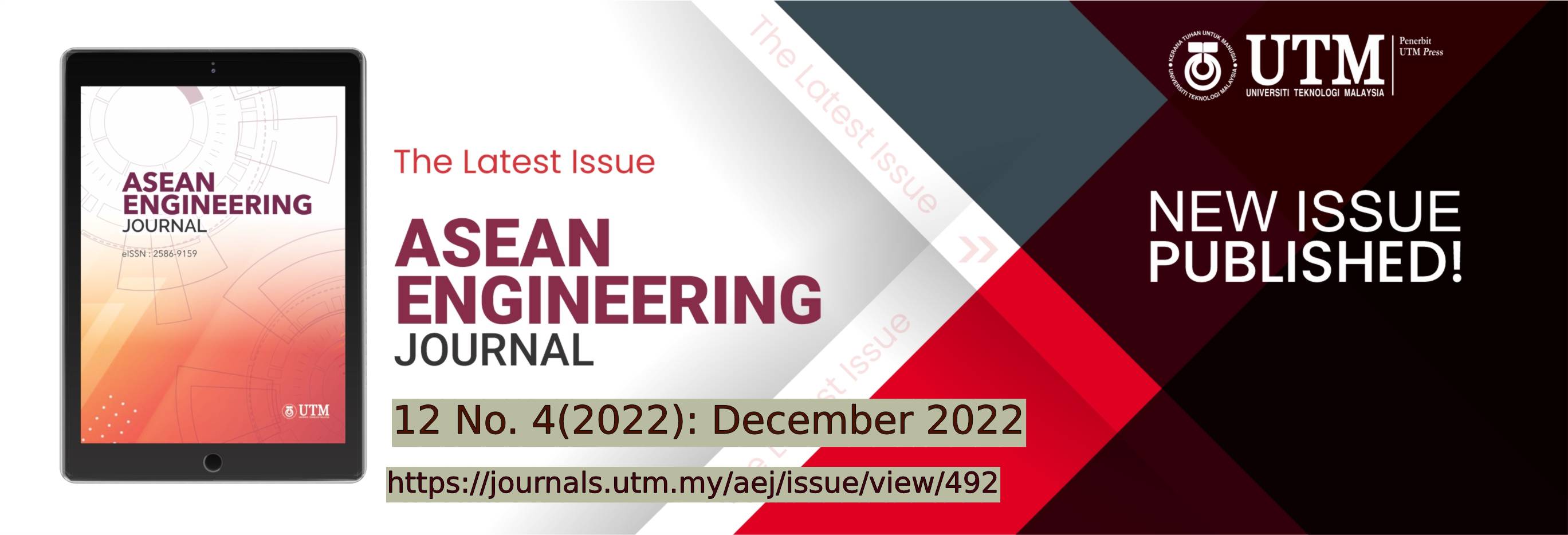HIGH COMPRESSIVE STRENGTH 3D PRINTED INFILL BASED ON STRUT-BASED LATTICE STRUCTURE
DOI:
https://doi.org/10.11113/aej.v12.17813Keywords:
3D printing, Additive Manufacturing, Infill, LatticeAbstract
In an attempt to make Additive Manufacturing more material-efficient, researchers come across the idea of re-enforcing 3D printed objects by infill pattern modification. In line with this concept, this paper introduces a new innovative infill pattern inspired by a variety of strut-base lattice structures that is stronger and more material-efficient than conventional 3D printing infill. This research provides the design, analysis, and experimental results of the developed 3D printed infills, then compared with a benchmark infill. Three (3) strut-based lattice test samples, namely Body-Centered Cubic (BCC), Face-Centered Cubic (FCC), and Octet-Truss, were designed and 3D printed with an equal amount of material used, then undergo compressive test on Universal Testing Machine. Results showed that BCC, FCC, and Octet-truss infill pattern print has a compressive strength of 11.25 MPa, 8.47 MPa, 7.44 MPa consecutively, while benchmark infill has 9.73 MPa. This data proves that with the same amount of material consumed, the BCC lattice structure infill withstands a compressive load higher than the benchmark infill, which is offered in a 3D printing slicer.
References
Bates-Green, T., Howie, K., 2017. Materials for 3D Printing by Fused Deposition. Technical Education in Additive Manufacturing & Materials. 1–21,
Wang, X., Jiang, M., Zhou, Z., Gou, J., Hui, D., 2017. 3D Printing of polymer matrix composites: A review and prospective. Composites B; 110: 442–58. DOI: http://dx.doi.org/10.1016/j.compositesb.2016.11.034,
Ngo, T.D., Kashani, A., Imbalzano, G., Nguyen, K.T., Hui, D., 2018. Additive manufacturing (3D printing): A review of materials, methods, applications and challenges. Composites B; 143:172–96. DOI: http://dx.doi.org/10.1016/j.compositesb.2018.
Bandar, A., Subbarayan, S., Ammar M., 2020. Investigation of infill-patterns on mechanical response of 3D printed poly-lactic-acid. Polymer Testing. 87. DOI: https://doi.org/10.1016/j.polymertesting.2020.106557.
Aloyaydi, B.A., Sivasankaran, S., Ammar, H.R., 2019. Influence of infill density on microstructure and flexural behavior of 3D printed PLA thermoplastic parts processed by fusion deposition modeling. AIMS Materials Science 6: 1033. DOI: https://doi.org/10.3934/matersci.2019.6.1033
Johnson, G. A., French, J. J., 2018. Evaluation of Infill Effect on Mechanical Properties of Consumer 3D Printing Materials. Advances in Technology Innovation. 3(4): 179–184,
Farbman, D., McCoy, C., 2016. Materials testing of 3D printed ABS and PLA samples to guide mechanical design. ASME 2016 11th International Manufacturing Science and Engineering Conference 2016, 2. DOI: 10.1115/MSEC2016-8668.
Wu, J., Aage, N., Westermann, R., Sigmund, O., 2018. Infill Optimization for Additive Manufacturing-Approaching Bone-Like Porous Structures. IEEE Transactions on Visualization and Computer Graphics. 24(2): 1127–1140. DOI: 10.1109/TVCG.2017.2655523
Taf, S.T., Huiskes, R., Ruimerman, R., Van Lenthe, G.H., Janssen, J.D., 2000. Effects of mechanical forces on maintenance and adaptation of form in trabecular bone. Nature, 405(6787): 704–706. DOI: https://doi.org/10.1038/35015116
Ni, Y., Wang, L., Fan, Y., 2017. Mechanical Properties of Triply Periodic Minimal Surface Structures Mimicking the Microstructure of Woodpecker’ s Cranial Bone., 2017. 39th Annual International Conference of the IEEE Engineering in Medicine and Biology Society (EMBC). 1873-1876, DOI:10.1109/EMBC.2017.8037212.
[11] Chu, T., Damirez, V.E., Ramos, L., Venancio, L., Chua, A., 2020. Increasing Material Efficiency of Additive Manufacturing through Lattice Infill Pattern. International Journal of Automation and Smart Technology. 10: 101-108. DOI:10.5875/ausmt.v10i1.2140.
Hao, L., Raymont, D., Yan, C., Hussein, A., and Young, P., 2012. Design and additive manufacturing of cellular lattice structures. International Journal of Frontiers in Engineering Technology, 3(4): 63-69. DOI: https://doi.org/10.25236/IJFET.2021.030410.
Gibson, L. J., 1989. Modelling the mechanical behavior of cellular materials. Materials Science and Engineering: A,Volume 110: 1-3. DOI: 10.1016/0921-5093(89)90154-8.
Ashby, M.F., 2006. The properties of foams and lattices. Philosophical transactions. Series A, Mathematical, physical, and engineering sciences, 364(1838): 15–30. DOI: https://doi.org/10.1098/rsta.2005.1678
Maconachie, T., Leary, M., 2019. SLM lattice structures: Properties, performance, applications and challenges. Materials & Design, Volume 183: 108137, DOI: 10.1016/j.matdes.2019.108137.
Pan, Z., Ma, R., Wang, D., Chen, A., 2018. A review of lattice type model in fracture mechanics: theory, applications, and perspectives. Engineering Fracture Mechanics. 190: 382–409, DOI: 10.1016/j.engfracmech.2017.12.037.
Kim, H.J., Song, K.I., Jung, H.S., Shin, Y.W., Shin, J. H., 2018. Performance evaluation of lattice girder and significance of quality control. Tunnelling and Underground Space Technology. 82: 482–492 DOI: 10.1016/j.tust.2018.08.058.
Deshpande, V.S., Ashby, M.F., Fleck, N.A., 2001. Foam topology: bending versus stretching dominated architectures. Acta Materialia, 49(6): 1035-1040. DOI: 10.1016/S1359-6454(00)00379-7.
Yao, T., Deng, Z., Zhang, K., Li, S., 2019. A method to predict the ultimate tensile strength of 3D printing polylactic acid (PLA) materials with different printing orientations, Composites Part B: Engineering, 163: 393-402. DOI: 10.1016/j.compositesb.2019.01.025.
Syam, W.P., Jianwei, W., Zhao, I., Maskery, I. Leach, R., 2018. Design and analysis of strut-based lattice structures for vibration isolation. Precision Engineering, 52(September): 494–506. DOI: 10.1016/j.precisioneng.2017.09.010
















